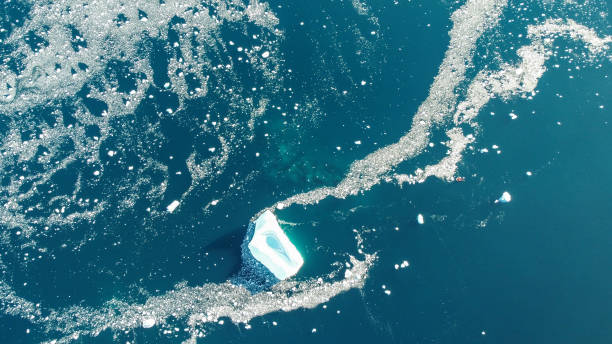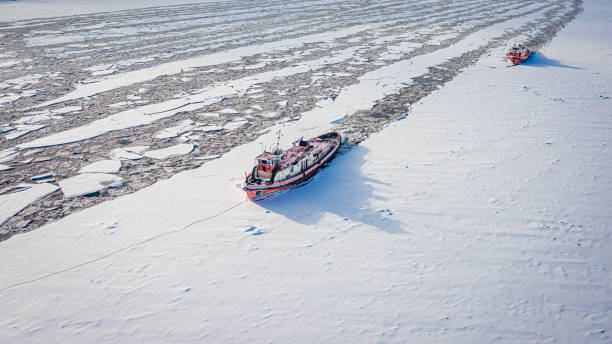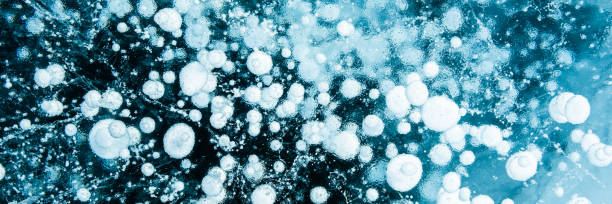When it comes to the intricate world of climate science and environmental changes, few phenomena capture the complexity of Earth’s systems quite like the drifting sheets of ice. Recently, the New York Times (NYT) has featured stories and articles on the topic of drifting sheets of ice, shedding light on their impact on global sea levels, weather patterns, and ecosystems. This topic touches on an essential aspect of climate change, where melting ice is not only a symptom but also an accelerant, pushing us toward a future with rapidly shifting environmental conditions.
In this article, we will delve into the concept of drifting sheets of ice, explain what they are, how they form, and why they are such an important subject in both scientific research and environmental discourse. Additionally, we will examine how such ice movements are covered by mainstream media like NYT and the role these articles play in informing the public about global warming and its consequences.

What Are Drifting Sheets of Ice?
Definition and Formation of Drifting Ice Sheets
Drifting sheets of ice refer to large, expansive ice masses that break free from glaciers or ice shelves and float on the ocean. These ice sheets originate in polar regions where temperatures are low enough to sustain vast quantities of ice over long periods. They are typically formed through the slow accumulation of snow over millennia, eventually compacting into thick layers that flow slowly under their own weight.
In the polar regions, especially in Antarctica and Greenland, ice sheets move towards the ocean’s edge, where portions of them may break off and drift into the sea. These drifting sheets of ice play a crucial role in understanding climate change because their movement and melting directly influence global sea levels.
How Ice Sheets Break Free and Drift
The process by which ice sheets break off from their origins and drift away is complex. It involves several stages:
- Calving: This is the term used when large chunks of ice break off from the edge of an ice sheet or glacier, often forming icebergs. This can happen due to the sheer force of the ice’s weight, the melting of ice along the base, or external factors like ocean currents or atmospheric temperatures.
- Drifting: Once these ice sheets are released, they can drift across the ocean for extended periods, moved by ocean currents and winds. As they drift, they continue to melt, contributing to rising sea levels.
- Melting: Drifting sheets of ice contribute to global sea level rise as they melt, which can have widespread implications for coastal communities and ecosystems worldwide.
The Role of Drifting Sheets of Ice in Climate Change
Contribution to Rising Sea Levels
One of the most significant environmental implications of drifting sheets of ice is their contribution to global sea level rise. As these ice sheets melt, they release vast quantities of fresh water into the ocean, which causes sea levels to rise. Over the past few decades, the rate at which ice sheets are drifting and melting has accelerated, largely due to warming global temperatures.
When ice from Antarctica or Greenland enters the ocean, it directly contributes to the increase in sea levels. The NYT and other media outlets have reported extensively on this issue, highlighting the urgent need for global climate action. Scientists predict that continued melting of ice sheets could contribute to several meters of sea level rise over the next few centuries, threatening low-lying cities and regions around the world.
Impact on Ocean Currents and Weather Patterns
The movement of drifting sheets of ice also affects ocean currents, which play a crucial role in regulating the planet’s weather patterns. When large quantities of freshwater from melting ice sheets are added to the ocean, it can alter the salinity and temperature of the water. These changes can disrupt ocean currents, which, in turn, influence climate patterns such as the Gulf Stream and the El Niño/La Niña phenomena.
The shifting of ocean currents caused by melting ice sheets can lead to unpredictable weather, including more extreme storms, droughts, and shifts in rainfall patterns. The NYT and other climate-focused publications often cover these developments, stressing the interconnectedness of Earth’s systems and the cascading effects of melting ice.
How the New York Times Reports on Drifting Sheets of Ice
In-Depth Analysis of Ice Dynamics
The New York Times has dedicated substantial coverage to climate change and the movement of drifting sheets of ice. Through in-depth reports and investigative articles, the publication has brought attention to the ongoing changes in the Arctic and Antarctic ice sheets, analyzing their implications for global sea levels and climate systems.
The NYT often highlights scientific research that monitors the movements of ice sheets using satellites, oceanographic data, and field studies. These articles help the public understand how quickly ice is melting and drifting, offering insights into how scientists track and predict the behavior of these massive ice bodies.
Reporting on the Consequences of Melting Ice
Another key aspect of drifting sheets of ice coverage by the NYT is the exploration of the real-world consequences of ice melting. In addition to focusing on the environmental and ecological impacts, such as the loss of habitat for polar species, the NYT also addresses the socio-economic effects. Rising sea levels, caused by melting ice, can lead to coastal flooding, displacement of communities, and the destruction of infrastructure.
The NYT reports on both the immediate and long-term consequences of these changes, bringing the human impact of climate change to the forefront. Through interviews with climate scientists, local governments, and affected communities, the publication provides a balanced and nuanced understanding of the challenges posed by drifting ice sheets.
The Global Implications of Drifting Sheets of Ice
Coastal Cities at Risk
One of the most immediate concerns of drifting sheets of ice is the effect on coastal cities. As ice sheets continue to melt and drift, they contribute to rising sea levels, which threatens cities like New York, Miami, Jakarta, and many others around the world. These cities face the prospect of increased flooding, saltwater intrusion into freshwater supplies, and damage to critical infrastructure.
Efforts to mitigate these risks are ongoing, with governments around the world investing in infrastructure designed to protect against rising waters. However, the task is immense, and the drifting sheets of ice continue to accelerate the urgency of finding viable solutions to protect vulnerable populations.
Disruption of Ecosystems
The melting and drifting of ice sheets also have significant effects on global ecosystems. As ice melts into the ocean, it disrupts marine ecosystems, affecting everything from plankton to large marine mammals. For example, polar bears, which rely on sea ice for hunting, are losing their habitat as the ice sheets recede.
This disruption has a cascading effect on food chains, as the loss of sea ice impacts the migration patterns of various species. Scientists and conservationists are closely monitoring these changes and their impact on biodiversity. The NYT has frequently covered the plight of polar species and the broader ecological consequences of ice melting, helping to raise awareness about the environmental challenges that come with drifting sheets of ice.
The Future of Ice Sheets: What We Can Expect
Predictions for Ice Sheet Melting
Looking ahead, scientists are closely monitoring the rate at which drifting sheets of ice are breaking off and melting. As global temperatures continue to rise, the trend of accelerated melting is expected to persist. In some scenarios, scientists predict that entire ice shelves could collapse within a few decades, further accelerating sea level rise.
The melting of ice sheets will not only affect coastal cities but also have far-reaching effects on global weather systems. The NYT and other publications continue to track these developments, reporting on the latest scientific findings and modeling efforts to predict the future behavior of ice sheets.
Efforts to Slow Ice Melt
While some changes are inevitable, there are ongoing efforts to slow the melting of drifting sheets of ice. International agreements such as the Paris Climate Accord aim to reduce global greenhouse gas emissions, which are a primary driver of global warming. Reducing emissions could slow the rate of ice melt and give communities more time to adapt to the changing climate.
In addition, researchers are exploring innovative solutions to protect ice sheets, including geoengineering approaches such as reflective surfaces to cool the ice or artificial structures to slow the melting process. These technologies are still in their early stages, but they represent a hopeful step toward mitigating the impact of drifting ice sheets.

Final Verdict On Drifting Sheets of Ice NYT
The phenomenon of Drifting Sheets of Ice NYT is a critical issue in the study of climate change and its global impacts. As these ice sheets continue to melt and drift into the ocean, they contribute to rising sea levels, disrupt ecosystems, and alter weather patterns. The New York Times and other outlets have played an essential role in bringing attention to this issue, offering in-depth reporting and analysis that helps the public understand the complex dynamics at play.
With the ongoing threat of climate change, it is crucial to continue monitoring the behavior of drifting ice sheets and their long-term effects. While the situation is dire, efforts to slow the melting process and mitigate its impacts are ongoing, providing hope for a future in which we can better manage the consequences of these changes.
FAQs about Drifting Sheets of Ice NYT
What are Drifting Sheets of Ice NYT?
Drifting Sheets of Ice NYT refer to large pieces of ice that break off from glaciers or ice shelves and float on the ocean, often contributing to rising sea levels as they melt.
How do drifting sheets of ice affect the environment?
As these ice sheets melt, they release freshwater into the ocean, causing sea levels to rise and potentially disrupting ecosystems and global weather patterns.
Why are drifting sheets of ice important in climate change studies?
They are crucial because their melting contributes significantly to sea level rise, which threatens coastal cities, ecosystems, and global infrastructure.
How does the New York Times report on drifting sheets of ice?
The New York Times provides in-depth reporting on the dynamics of drifting ice, highlighting scientific research, environmental impacts, and the socio-economic consequences of rising sea levels.
What can be done to slow the melting of drifting ice sheets?
Efforts include reducing greenhouse gas emissions, exploring geoengineering technologies, and investing in climate change mitigation strategies.

